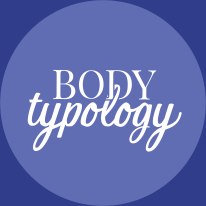Osteoporosis Risk Factors
Are you at Risk?
An overview of all the osteoporosis risk factors.
As a woman you have a 1-in-3 chance of developing osteoporosis. However, the good news is that it is preventable and it’s treatable. The trouble with osteoporosis is that it is a silent disease. Most women do not know that they have it until they break a bone or have a bone density test.

Lifestyle factors
Genetics
If you have a family history of decreased bone density you may be at risk if either both or one of your parents has been diagnosed with osteoporosis, or you have an older sister with it. Your risk may be higher if they developed the disease early in life.
Remember that bone density tests are recent so your parents might not have been aware that they had osteoporosis. Did they fracture a bone, had they lost height? Did they have a hunched over posture or chronic back pain?
Your Race
The lighter your skin the greater risk you have for developing osteoporosis.
The percentages of women over 50 that have osteoporosis
Estrogen and your Menstrual Cycle
Estrogen is vital to bone growth. Estrogen and osteoporosis is discussed at length in osteoporosis causes.
Because of missed periods and eating disorders women in their 20s and 30s can get osteoporosis. It is not the norm but it is possible.
Athletic women who are actively participating in competitive sports and not menstruating can also increase their osteoporosis risk factors later in life. It can affect women who appear to be in top physical condition.
Early onset of menopause
The risk of osteoporosis for all women increases after menopause, but if you went through menopause before age 45 you have less lifetime exposure to estrogen. This also includes women who have had a hysterectomy before age 45. Estrogen helps build bones and suppresses bone loss.
Tall and slender build
A slender build usually has less bone mass, and you are at an additional risk if you are underweight. Very thin women have lower levels of estrogen, less force is applied to the bones, and less caloric intake means fewer beneficial and necessary nutrients are available to the body.
If your BMI is under 19 you are underweight.
A history of yo-yo or crash dieting
The best way to lose weight is slowly, one pound per week or two. When you lose weight too fast most people lose bone and muscle along with fat.
Eating disorders raise osteoporosis risk factors as they normally occur in the teens and twenties when young women are building bones.
Some medical disorders that increase osteoporosis risk factors:
Rheumatoid arthritis
Those with rheumatoid arthritis have extra activity of the osteocast cells that dissolve bone. The problem is also worsened with the medications taken for this disease.
Thyroid disorders
Hyperthyroid produces excess thyroxin which stimulates the osteoclasts to break down bone. The medication for hypothyroid can be detrimental if the dose is too high, raising risk until the dose is regulated.
Kidney Diseases, Liver Disease, Adrenal weakness, Hypertension
Parathyroid disorders
If too much of the PTH (parathyroid hormone) is secreted, osteoblasts break down the bone.
Type 1 Diabetes that is poorly controlled can increase risk.
Chronic digestive disorders
Such as food allergies, colitis or Crohn's disease make it harder for the body to absorb calcium, which could raise your osteoporosis risk factors.
Some Medications that Increase Risk:
References:
Nelson, E. Miriam, Ph.D. Strong Women, Strong Bones
(New York: G.P.Putnam's Sons, 2000) 65-81.
Brown, E. Susan, Ph.D. Better Bones, Better Body, Beyond Estrogen and Calcium (Illinois, U.S.: Keats Publishing, 2000) 62-71.
